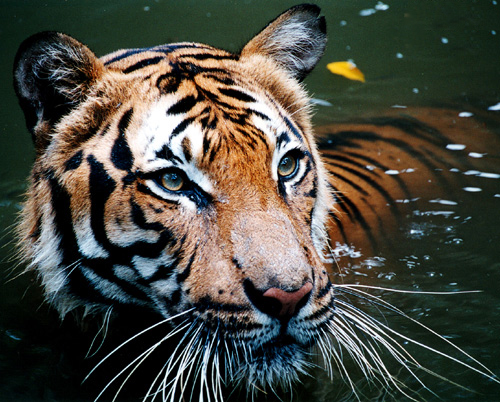New Software can identify a tiger from its pelt, helping to catch poachers out in the act.
 A tiger's stripes are unique, much like our own fingerprints, so this means that individual tigers can be identified from its colouring.
A tiger's stripes are unique, much like our own fingerprints, so this means that individual tigers can be identified from its colouring.
Lex Hiby, from Conservation Research Limited, has developed a software system that uses images taken by camera traps, and stitches photos together to build a three-dimensional map of the markings, all the way from the neck to the base of the tail. This 'map' can not only let us identify individual animals in the wild - helping to get accurate population numbers, but can also be flattened and used to identify skins traded on the black market. This has the added benefit of knowing where and since when the tiger was killed, helping trap poachers in the act.
It's an accurate technique too. From a collection of between 264 and 298 tigers, the software correctly matched 95% of images that belonged to the same animal.
The idea behind this, using pattern recognition to identify individual animals, has been used for several different species, such as grey seals, cheetahs, penguins and whale sharks. The beauty of pattern recognition is that you do not need your photos to be uniform. In fact, tourist photos have been used alongside those taken by researchers to show that numbers of whale sharks have increased by 1.7% over the last 12 years, according to Jason Holmberg of research organisation Ecocean.
Hiby is confident that this software could make the backbone of a central database, as he writes in this week's biology letters:
"An image of a skin that had been taken from one of the tigers in that database could be traced within a few minutes to where and when the living animal was last recorded." It's a simple software solution to help in the fight to protect this endangered species.










Comments
Add a comment